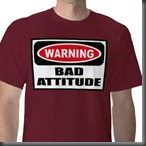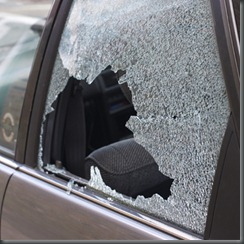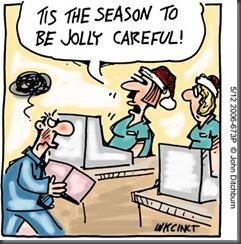Traffic Accidents / Getting Stopped
Producing the right paperwork
Since I’m now working as a traffic officer, I thought I’d give a few quick tips regarding traffic accidents and being stopped. First off, go out to your car when you finish reading this and do a quick test. Look at your watch and start the second hand when you get in your car. See how long it takes you to find your current registration and insurance papers. Most people have to sort through several years of registrations and insurance cards before they find the current ones. That is if they have the current ones in the car. If you are one of the few who have them handy quickly, then good for you.
I stop lots of cars daily and also respond to automobile accidents. I need to see the current registration and proof of insurance for each vehicle. I see people open their glove boxes that are so packed full of papers, napkins, and just about everything else that it all falls to the floor when they open it. Then I wait while they hand me registrations and insurance cards that are years old. It’s not uncommon for people to have several years worth of paperwork in the glove box.
Here are a few tips to make it easier for both you and me if you are ever asked to show the paperwork for your vehicle. First, clean out your glove box today. Throw away the old napkins, the stale gum, whatever you put in there long ago and forgot about. Next, take all the old registration papers and insurance cards and shred them or burn them. Don’t just throw them in the trash, you want to get in the habit of destroying any unwanted paperwork that has your personal information on it.
Now, take your current registration and proof of insurance card and keep them together. Paperclip them together and put them somewhere you will remember where they are. Some people keep them in the vehicles owner manual or up in the visor. One thing that works real well is getting a little plastic holder you can slip both the registration and insurance card into. That way they are together and quickly accessible. Now here’s the important part. Make sure you replace the old paperwork with new paperwork whenever you receive it. That’s once a year for registrations and usually once or twice a year for automobile insurance.
When you receive a new registration card or insurance proof card, just take out the old cards and replace it with the new one. If you get in the habit of doing that, it will save you time and money. You can get a ticket for not having the current registration or proof of insurance card in your vehicle. It doesn’t matter if you have an old one with you and the information or insurance company is the same, you have to keep current paperwork in your vehicle with you.
Just one more thing while I’m on the subject of paperwork. People often hand me the pink slip to their vehicle when I ask for registration. You should never keep the pink slip to your vehicle in the car. Keep it in a safe and secure place in your home. A locked safe or safety deposit box is ideal. A pink slip is the ownership title to your car. If someone steals your car with the title in the glove box, they can forge your signature and sell the car. Then the unsuspecting buyer tries to get the car registered in their name. It can be a long frustrating experience to try and straighten it out. The Department of Motor Vehicles issues a registration card each year that you renew the registration. That is what you keep in the vehicle.
I also often get handed an entire insurance policy packet when I ask for insurance. All you need to carry is a little card showing the insurance company name, the person and vehicle the policy is issued for and most importantly, the effective dates for the policy. You need to carry proof that your insurance policy is valid. Most insurance companies issue proof of insurance cards every time the policy is renewed. If yours does not, contact your insurance company and request one. They are obligated to furnish you with proof of insurance if you have a current policy with them.
Now for accidents. Accidents happen, that’s why they call them accidents. Don’t get upset or violent over an accident, cars can be fixed. First thing is injuries. If anyone is injured, assist them and keep them still until police or medical help arrives. If there are no injuries and it is a minor fender bender, you can move the vehicles to the side of the road for safety if both parties agree. If there are injuries or if it is a serious accident, leave the cars where they are. Don’t get in an argument with the other driver over who is at fault. Wait for the police to arrive and tell them what happened.
A police report is not always needed with minor non-injury accidents. Some police departments won’t even respond to a non-injury collision such as a minor fender-bender or minor parking lot accident. At least with California law, a minor accident only requires that both parties exchange information such as driver, vehicle and insurance information. In California, if the damage exceeds $500 or if there are injuries, you must complete an additional SR-1 form with the Department of Motor Vehicles. Some insurance companies may do this for you. It’s best to check with your insurance company or State laws if you are unsure. If an accident is severe or if there are injuries, a police report should always be made.
If you are involved in an accident, you will usually be required to show registration and proof of insurance at the accident scene. You can be cited and/or fined if you do not have current proof with you.
If you accidentally hit an unoccupied-parked car, you need to leave a note on the other vehicle with your name, contact information and a brief summary of what happened. You must leave the note in a conspicuous place on the other car. If you are involved in an accident and leave the scene without exchanging information or without leaving a note, you committed a hit & run. Hit and run is a Misdemeanor offense that you can be charged with or arrested for. If there are injuries, it becomes a Felony. If you get hit by someone who tries to flee the scene, the best thing you can do is write down the license plate number and try to get a look at the driver. If you have the license plate number and can identify the driver, you stand a good chance of seeing the responsible person brought to justice.
So there’s just a few tips in case you are stopped or if you are involved in an accident. Now go clean out that glove box and put your current paperwork together so if you’re asked to show it to an officer, he’ll be impressed how quickly you are able to show it. If he’s real impressed, you might even get out of a ticket…………….
Mark







